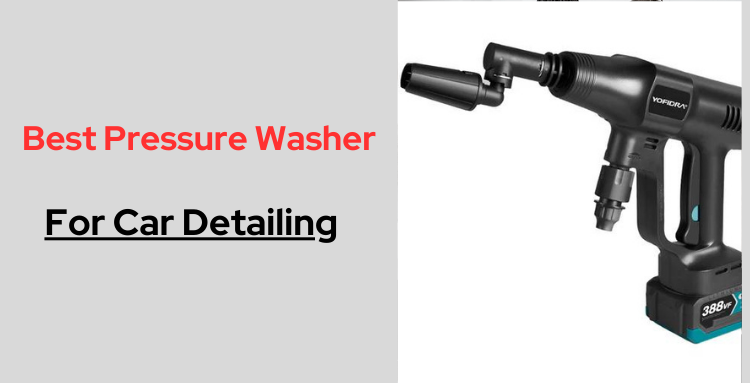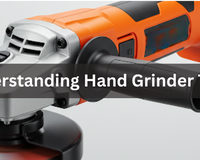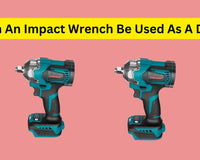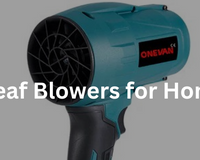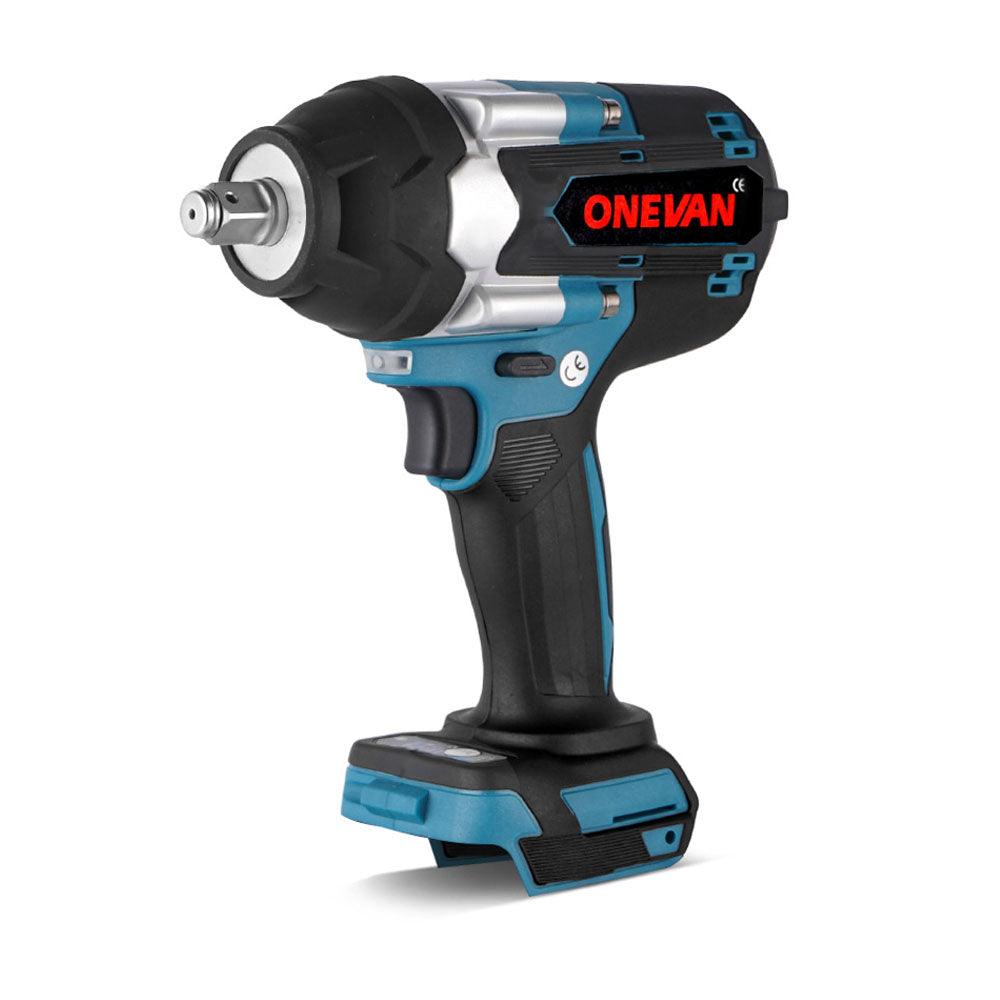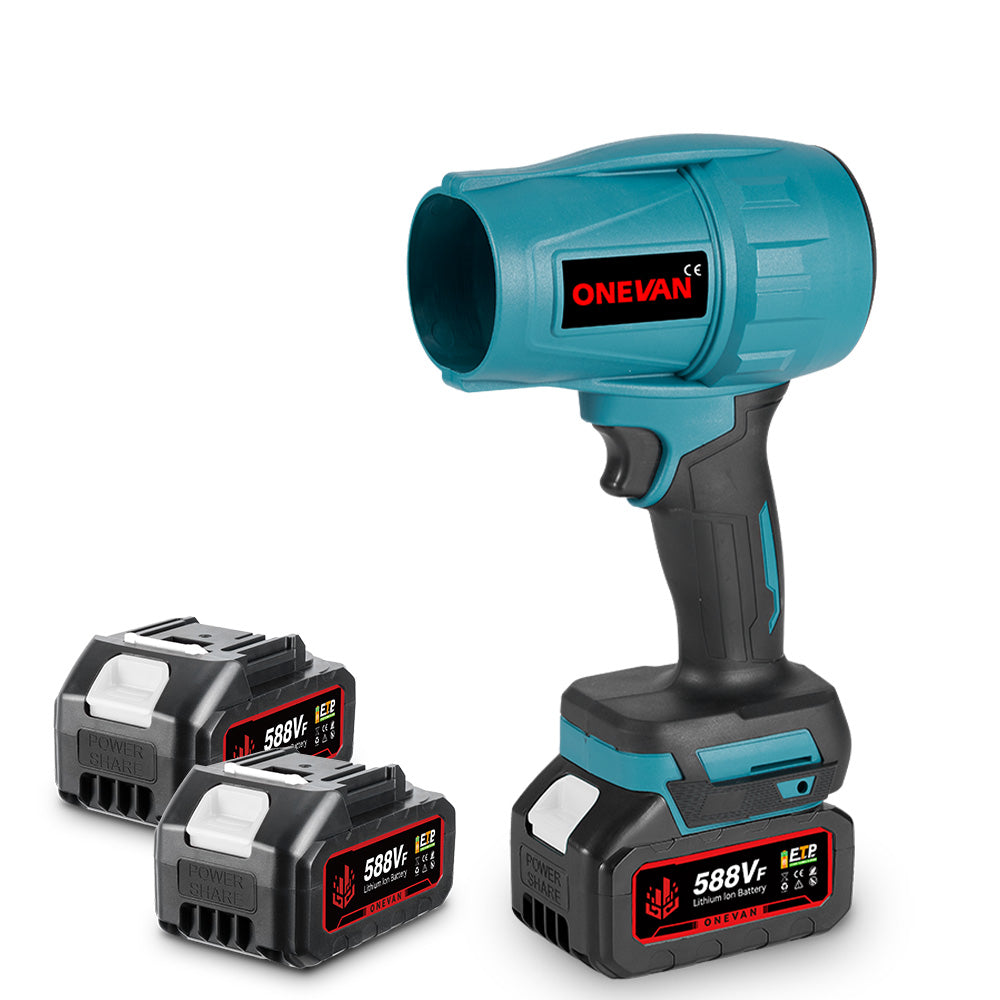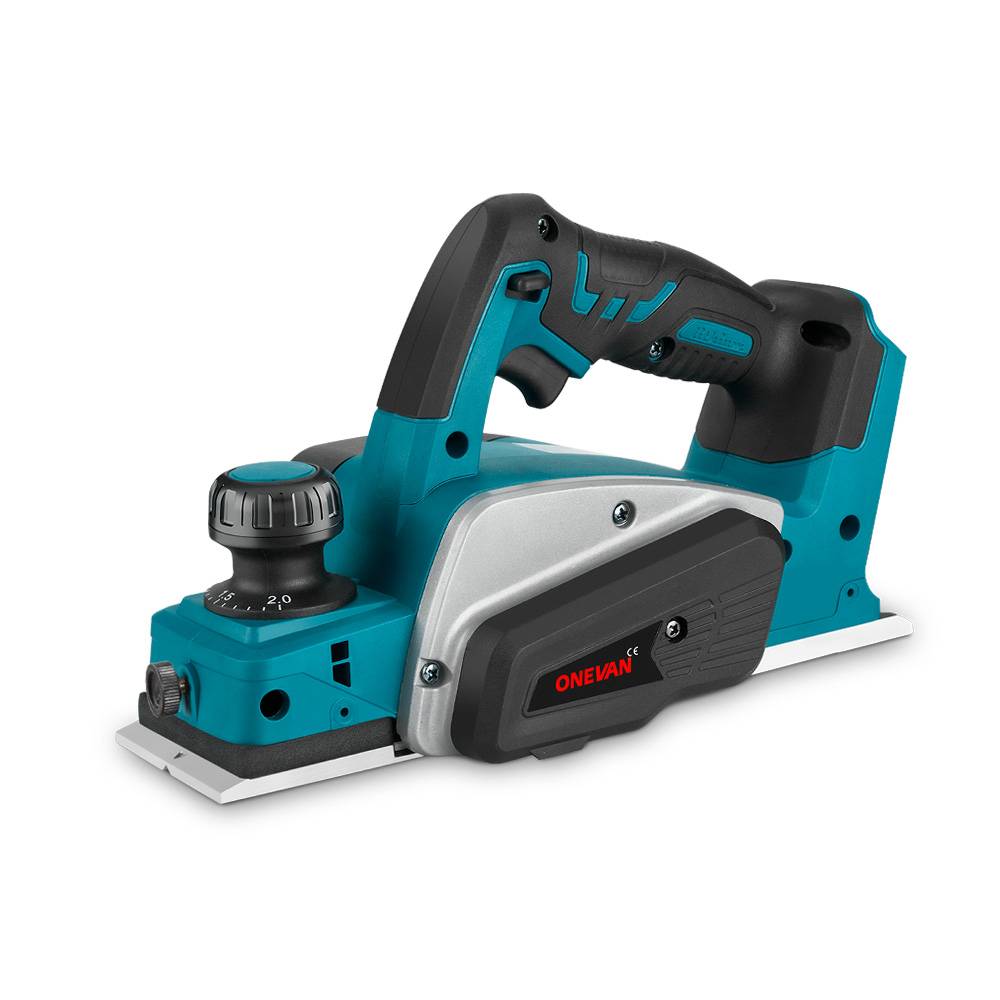Many car owners derive immense satisfaction from a spotless and meticulously clean vehicle. Professional-grade detailing, however, is time-consuming and difficult, which could deter most car owners. Especially, handling tough stains can be challenging for newbies. In this article, we are going to explain everything for a beginner user who has a passion for car detailing.
The car detailing industry has grown very fast as shown by the numbers. In 2023, the best car pressure washers market value was $1.39 billion, but in 2024 it rose to $1.54 billion with a compounded annual growth rate of 10.6%. As a result, the overall international power cleaner sector is expected to hit USD 3.0 billion by 2026, says Business Wire.
So, for you what's the best pressure washer? This is a question you guys, my viewers, commonly ask. And today, we're taking a deep dive into it because we will be looking at pressure washers in every aspect. We'll be talking about their performance, the value for money, the build quality, and all the necessary features to comprehend which one is the best fit for you.
According to the latest study, around 70% of car owners wash their vehicles alone. Furthermore, several respondents complain that conventional car washing methods are time-consuming and physically draining.
1. Understanding Your Pressure Washers
What makes a pressure washer suitable for car detailing? So, the two most important aspects of your pressure washer are:
- PSI
- GPM
GPM stands for gallons per minute. While preferences vary, I recommend a PSI range of 900 to 1200 and as high a GPM as possible; ideally close to the two-gallons-per-minute mark.
Now, PSI is important because it can knock things loose on the surface of your vehicle if it's muddy. If there's anything that's embedded in it, it'll help remove that. Why is the flow so important, or the GPM? Well, that's important because that's what gives you the ability to rinse everything away.
Therefore, if you're applying foam to a car using foam cannon, a higher flow rate helps rinse away the suds quickly and efficiently.
1.1 What a Pressure Washer is and How it Works

A pressure washer uses a motor to pump water out. It creates a robust stream of pressure water. Its major components are:
- Pump
- Engine/Motor
- Unloader Valve
- High-Pressure Hose
- Spray Gun and Wand
1.2 Different Types of Pressure Washers for Car Detailing
The three main types of pressure washers for car detailing are:
- Electric
- Cordless
- and gas-powered.
Here's a table comparing their key features:
|
Feature |
Electric Pressure Washer |
Cordless Pressure Washer |
Gas-Powered Pressure Washer |
|
Water Flow Rate (GPM) |
Up to 2.5 |
Up to 1.3 |
Up to 4.0 |
|
Maximum Pressure (PSI) |
Up to 3,000 |
Up to 2,000 |
Up to 4,000 |
|
Mobility |
Moderate |
Excellent |
Less convenient due to heavy weight |
|
Cleaning Power |
Moderate |
Moderate |
High |
|
Runtime Continuous |
Unlimited |
Limited by battery life |
Limited by fuel capacity |
|
Setup Time |
Quick |
Quick |
Moderate |
|
Noise Level |
Low |
Moderate |
High |
|
Storage Space |
Moderate |
Compact |
Moderate |
|
Weight |
Lighter |
Lightest |
Heaviest |
|
Power Source |
Electricity |
Battery |
Gasoline |
|
Hose Length |
Up to 50 ft |
Up to 25 ft |
Up to 50 ft |
|
Cost |
Lower |
Moderate |
Higher |
|
Detergent Injection |
Often Included |
Sometimes Included |
Sometimes Included |
|
Maintenance Requirements |
Low |
Moderate |
High |
For car detailing, electric and cordless pressure washers are good. They are ecologically sound, low-pressure, quiet, and user-friendly. Electric washers are designed for users who have access to a power outlet near their washing area, while cordless models offer maximum mobility for easier maneuverability.
2. What is the Best Pressure Washer for Car Detailing?
While there’s no single pressure washer for car detailing that fits everyone, these are the key factors to keep in mind to determine the most suitable model for you. Excessive pressure can be detrimental to a car’s paint. Ideally, the pressure should range from 1,000 to 1,500 PSI to effectively remove dirt without risking damage to the paint.
The second largest determining factor is the water flow rate; it’s measured in gallons per minute.
The higher the GPM is, the faster you’ll get your car clean but it’s typically recommended that pressure washers for cars have not less than 1.5 GPM. Other facets include important additional gear and features that make detailing cars more comfortable. The most important nozzles would be a fan nozzle for everywhere and a soap nozzle to easily spread the detergent.
Incorporating a separate detergent injection system can enhance the cleaning process, though it is an additional component to manage. For ease of handling, some compact and lightweight pressure washers are available. Finally, choose a well-built pressure washer that will operate well for a long time. Quiet operation is another feature that electric and cordless washers can mention.
3. Factors to Consider When Choosing a Pressure Washer

Choosing a good pressure washer for your car detailing needs is important to secure your car. Generally, several newbies consider it as a washing tool only, but using car power washers correctly can help you complete your job effectively.
Here are recommended PSI and GPM ranges for safe car cleaning:
|
Factor |
Recommended Range for Car Detailing |
|
Pressure Output (PSI / Bar) |
1,000 - 1,500 PSI (6.9 - 10.3 MPa) |
|
Water Flow Rate (GPM / L/Min) |
1.5 - 2.5 GPM (5.7 - 9.5 L/Min) |
|
Cleaning Unit (CU) |
Not a major factor for car detailing |
While it may seem that higher PSI results in better cleaning, pressures exceeding 1,500 PSI can damage a vehicle’s paint. The extended PSI can remove the wax from the paint job or even destroy the protective layer. Therefore, maintaining a lower pressure output with the recommended nozzle can fully clean a car without causing damage.
GPM is determined by how many gallons of water flow per minute. This rate affects cleaning time directly. Higher gallon-per-minute rates rinse dirt and soap off cars significantly faster, thus making washing cars easier on cleaners’ bodies. However, while higher GPM rates enhance cleaning efficiency, they should be balanced with considerations for overall water consumption.
GPM should be adjustable so you can decide how much water each uses. For instance, a lower GPP would be better for applying detergent or cleaning mild car areas. Finally, moderate pressure with sufficient water flow is the best-detailing cleaning approach.
4. Safety and Maintenance Considerations for Car Detailing
Safety for car detailing is something and just really addresses the concern of many people. You might be thinking, “Is my pressure washer too powerful to wash my car?" And the answer to that is no. But there are definitely some things you're going to want to be careful with when you're using a really high PSI pressure washer on your car.
4.1 Case Studies of Pressure Washers for Car Detailing
User Case No 1
Joseph bought all the equipment and the pressure washer with a very high PSI, very high flow pressure washer. Now, let me tell you guys, it worked great for him. Like, he was able to get through cars faster because it pushed all the dirt and everything off. However, was that too much? Yeah, I would say it probably was. Um, nowadays, he typically likes to operate between 900 and 1200 PSI in most cases and usually around that 2 GPM or as close to it as I can get. 2 GPM means 2 gallons per minute or that's just the flow rate of the water going through the machine.
Use Case No 2
When Andy first started detailing, he was probably into it for only about a year. Was called out to a hotel to clean a car that was in town for a car show. It was an old Alfa Romeo Spider, he believed. Now, because that was an older car, the paint wasn't perfect on it. He was using the specific pressure washer that Joseph had just used to wash the cars with higher PSI. High PSI.
But this particular car had a piece of older paint that had peeled up, kind of separated from the body and peeled up a little bit. He used a pressure washer with the same PSI, and it blew that piece right off.
Moral of the story? The damage might have occurred even at a lower PSI, but using high PSI on delicate paint increases the risk of such incidents.
4.2 Safety Considerations for Car Detailing with a Pressure Washer:
Using a pressure washer safely is essential. Here are some key points:
- Personal Protective Equipment (PPE): Use safety glasses, gloves, and long pants.
- The working area should be safe: Keep children and pets away from the operating area.
- Check Pressure Washer: Before use, check for leaks, loose connections, or damaged hoses.
- Pressure Settings and Distance: Start with the lowest pressure setting.
- Avoid Direct Streams on Sensitive Areas: Never directly spray windows, trim, or engine compartments
- Ventilation: In poorly ventilated areas, use a respirator.
- Electrical Safety: For electric models, ensure proper grounding.
- Detergents or Cleaners Safety Use: Only use detergents specifically designed for pressure washers.
4.3 Maintenance Tips for Pressure Washer Performance:

How to maintain the pump, the most critical part of your pressure washer, and how to keep everything going year after year. We are going to show you real quick how to do proper maintenance on your pressure washer.
Here are some key maintenance tips:
- Regular Inspections:
- Proper Storage:
- Clean Filters:
- Pump Maintenance:
- Tighten Fittings:
- Nozzle Care:
- Battery Care (for Cordless Models):
- Avoid Dry Running:
5. Additional Pressure Washer Accessories for Enhanced Car Detailing
There are various accessories available to give you perfect car detailing:
Foam Cannon - This equipment can help clean and lubricate better than ordinary detergent because it produces a large quantity of compact soapy foam. It can aid in breaking down dirt and grime more effectively than liquid detergent alone.
Different Nozzle Tips - Pressure washers have a variety of nozzle tips, and thus a variety of spray patterns. For example, fan nozzles are suited to general cleaning or for wide surfaces; while narrow jet nozzles can reach into tight corners where only sprightly fingers would ever fit.
Rotary Brushes - These motorized brushes attach to the wand and get tough caked-on mud and filth off.
Undercarriage Cleaner - This special nozzle allows you to safely clean the underbelly of your car.
Extension Wands - These lengthen the reach of the wand, making it easier to wash out-of-the-way parts on your car.
Surface Cleaner - This attachment makes a wider, milder spray pattern suitable for washing large car surfaces without peeling paint or causing damage.
Water Filter - A water filter inhibits the accumulation of minerals in the machine's pump and thus prolongs a pressure washer's useful life.
Quick-Connect Fittings - They let you snap hoses and accessories on or off more quickly and thus work more effectively.
Trigger Gun with Safety Lock - A trigger gun with a safety lock protects you from activating the washer accidentally.
Soft Bristle Brush - A soft bristle brush allows gentle scrubbing. Here it comes into play with cars that have delicate surfaces.
Pressure Regulator - This adjustable flow attachment confers still more control on the professional car detailer.
6. How Does a Pressure Washer for Car Detailing Affect Environmental Impact and Sustainability?
The environmental impact of using a pressure washer for detailing depends on two factors::
- Energy consumption
- And water use.
Gas-powered pressure washers have a more significant environmental impact due to their reliance on fossil fuels. Electric models, while generally having a lower carbon footprint, achieve optimal sustainability when powered by renewable energy sources, such as solar panels.
At the same time, cordless pressure washers are eco-friendly. While it is more convenient to use them instead of electric models. Recent research by Green Match indicates that lithium batteries can be more eco-friendly than traditional battery types
Gas-operated pressure washers also have a higher water flow, which could result in excessive use of water. Cordless washers also have a battery life and consume significantly less water. Electric washers have an optimal water flow, ensuring effectiveness in washing processes.
7. Future Trends in Pressure Washer Technology for Car Detailing
The future of pressure washers presents a plethora of exciting innovations set to take cleaning performance, sustainability, and user convenience to the next level. Most importantly, pressure washers will witness an increasing focus on battery innovation.
In this regard, cordless devices, which will now have longer run times and increased cleaning powers, will enhance their competition with gas-powered peers. Smart technology integration is gradually becoming more popular due to easy access via mobile applications that allow remote control, pressure adjustment, and maintenance reminders.
Otherwise, the sector is moving towards sustainability by ensuring that pressure washers are more energy-efficient and less reliant on gas-powered sources through innovations like solar panels. Water conservation efforts will see the rise of washers with built-in recycling systems or reduced water use characteristics.
8. Comparison of Top Cordless Pressure Washer Models for Car Detailing
Here's a brief comparison of some popular cordless pressure washer models for car detailing:
|
Model |
Maximum PSI |
Maximum GPM |
Battery Life |
Features |
|
Sun Joe SPX6001C-XR |
2,030 |
1.3 GPM |
Up to 45 min |
Lightweight, detergent injection, multiple nozzles |
|
Greenworks 2000 PSI 13 Amp 1.2 GPM |
2,000 |
1.2 GPM |
Up to 30 min |
Soap tank, multiple nozzles |
|
WORX WG644 40V Power Share |
1,300 |
0.8 GPM |
Up to 30 min |
Compact, lightweight, interchangeable batteries |
|
Ryobi 18V ONE+ 320 PSI 0.8 GPM |
320 |
0.8 GPM |
Up to 40 min |
Lightweight, ideal for light cleaning |
|
WestForce Electric Pressure Washer Cordless Power Washer |
1,500 |
1.0 GPM |
Up to 20 min |
Affordable, multiple nozzles |
Choosing the Right Cordless Model:
Purchasing a cordless pressure washer for car detailing requires consideration of the following four qualities: PSI and GPM, battery life, and lightweight. PSI, which denotes pounds per square inch, measures how hard the water stream is. A PSI range of 1,000-1,500 is generally suitable for car detailing, providing enough pressure to clean effectively without risking damage to the car's paint finish when used correctly.
GPM, for gallons per minute, is a measurement of how much water the unit consumes every minute. The higher the GPM, the faster it cleans, but I don’t need more than 0.8. Since cordless models rely on batteries, battery life is a crucial element. As such, I need to opt for a model that can wash my car easily on a single charge. Finally, a lightweight model will be more comfortable for me, as I’ll be moving the pressure washer.
ONEVAN 3500W 200Bar Brushless Electric High-Pressure Washer gives a gleaming finish with its 200Bar of pressure. Similarly, it is extremely maneuverable which helps you to take it anywhere. It has some astonishing features such as adjustable pressure settings, and easy assembly which is quite helpful for both beginners and professional users.
9. Conclusion
To conclude, the most important thing to do is to choose the correct cordless pressure washer for vehicle detailing; this can be done by focusing on power output, battery life, ergonomics, and features first. It is ideal to select a tool with a pressure range between 1000-1500psi and a minimum GPM of 0.8 which guarantees enough cleaning power.
10. FAQ
1. What pressure washers do car detailers use?
Commonly, experts in cleaning cars carefully clean cars with high-end washer car tools but average power washers that have qualities such as:
PSI range: 1000-1500 PSI (best for car detailing to prevent paint damage)
GPM (gallons per minute): 1.2-2.0 GPM for balanced cleaning power and water efficiency
Electric or gas-powered (either is okay if it meets the right specifications)
Build quality should be durable enough so that they last long.
Some of the typical brands used by detailers are Kranzle, AR Blue Clean, and Active.
2. What is the best pressure wash for detailing?
To find the right pressure washer, consider these important factors:
Pressure (PSI): For car detailing, 1000-1500 PSI is recommended.
Water flow rate (GPM): Aim for a flow rate of around 1.2-2.0 GPM.
Portability: Keep in mind the weight and size for ease of maneuverability.
Features: Seek out models with detergent injection, multiple nozzle tips, and adjustable pressure settings.
3. What is the best pressure washer PSI for detailing?
In car detailing, an ideal PSI range from 1000 to 1500 is considered a good option. Here's why:
Car paint is delicate. So, if you are a beginner and don’t have a piece of adequate knowledge, it is better to lead the user manual. It will help you to understand operating and safety features. Otherwise, you can damage the vehicle unconsciously.
4. Is a pressure washer worth it for car detailing?
Using a pressure washer can significantly have a positive impact on car detailing as opposed to hand washing. It offers superior cleaning capabilities; more effectively removes dirt, and saves time.
5. Are electric pressure washers good for car detailing?
Yes, electric pressure washers are a good option for car detailing, especially if you prioritize:
- Quieter operation
- Environmentally friendly operation (no gas emissions)
- Convenience (no need for gas refills)
6. What's better, a gas or electric pressure washer?
Gas pressure washers offer higher power but are louder, require gas refills, and emit emissions. Electric models are quieter, cleaner, and more convenient. However, their power may not be as high as gas models.
7. Is a pressure washer better than a power washer for cars?
There's no significant difference between a pressure washer and a power washer. Both terms are often used interchangeably and both types of washers can be used for car detailing.
8. Is 4000 PSI too much pressure washer for cars?
When it comes to car detailing, the ideal pressure washer PSI typically ranges from 1000 to 1500 PSI. High pressure can easily damage the car's surface such as the paint. However, within this range, the machine can effectively remove solid substances like grime.

